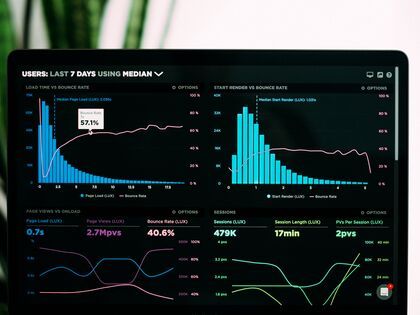7 Metrics Any Serious Marketer Should Understand

This should come as no surprise to anyone reading this, but data is vital. Without analytics, a website or piece of content cannot be optimized to its full potential. By that logic, any digital marketer worth its salt should understand at least some very basic metrics in order to achieve outstanding success.
Marketing metrics not only allow professionals and companies to improve their current content and performance based on hard data, but they provide the necessary information to set realistic KPIs and objectives.
Now, right off the bat, let’s make one thing clear: every marketer is different. What marketers consider crucial in terms of measuring performance varies from person to person. Regardless of which metrics you consider the most important, the following are – at the very least – the basics that will provide the necessary information to turn guesswork into educated decision-making.
Traffic

1. Unique Pageviews. How many unique visitors does your page get? This should not be confused with pageviews in general, which can measure several sessions from the same user. This metric will tell you how many different visits the website is getting. Having an idea about your traffic numbers is a great starting point to establish realistic goals for the next quarter or the whole year.
2. Source and Medium. Where does the traffic come from? Source will answer that. It will tell you exactly where your traffic is coming from. Medium, on the other hand, will reveal how. Is the traffic organic? Does it come from CPC ads? If you understand where the traffic is coming from and how it's coming in, you can develop strategies to boost efforts with the most effective channels.
Behavior

3. Session Duration. This one can be tricky because tools such as Google Analytics require a fair amount of data before they can offer proper estimates, but session duration will, in theory, reveal how long people are staying in any given page. This marketing metric – along with the bounce rate – can paint an accurate picture about the level of interest and engagement generated by specific pieces of content.
4. Bounce Rate. This is one of the scariest marketing metrics out there, right? This is one of the main pieces of data that greets you whenever you access your Google Analytics dashboard. It is right there, staring at you, judging you, making you nervous with all its potential for failure or success.
The bounce rate reveals the percentage of users who visit a page and then leave without further interaction with your website. While a high bounce rate can be a red flag, it is by no means an indication of something being wrong with your content. The idea behind most landing pages is that, once someone reaches it, he or she will be inclined to keep navigating the rest of the content available and, perhaps, reach an offer or two that will convert them into customers. If that is not happening then perhaps all you need are some tiny tweaks to the design or wording to change that (often called Conversion Rate Optimization).
The bounce rate is useful because it draws your attention to pages that might need some evaluation. Any digital marketer serious about generating traffic and converting leads must understand this metric.
5. Click-Through Rate. This marketing metric is the ratio showing how often people who are exposed to your ads or even your website as a search result actually click to visit. While Google has only ever hinted about the importance of this particular metric in terms of ranking, there is enough research out there to determine it very likely plays a vital role.
It is calculated by dividing the number of clicks by the number of impressions. With ads, this information is more readily available, but for organic traffic it might be best to get acquainted with Google Search Console.
Ready to Launch an Inbound Marketing Strategy That Delivers?
Work with us to attract the right audience, convert leads, and build long-term growth through targeted, data-driven inbound tactics.
Goals and Costs

6. Conversion Rate. You get the visits, but are they converting? How many are converting? This particular marketing metric reveals the ratio between your visits and actual conversions. A conversion is, of course, the point at which the recipient of a marketing message or visitor to your website carries out a desired action. For example, if the goal of your landing page is to have a visitor sign up for a newsletter and he does, then congratulations – you’ve achieved lead conversion.
When you divide the number of conversions by the number of visits a page is getting, you will get your rate of conversion. A high one means you are doing great. A low one means that page or marketing campaign might need some attention.
7. Customer Acquisition Cost. This is another tricky metric because it is not, strictly speaking, a figure that is available by general means. This is something you actually need to sit down and review. How much is acquiring each customer costing you? To calculate that, simply divide the total of all your costs acquiring clients (usually marketing expenses) by the number of actual customers you acquired during that specific period. That is your CAC.
As a good rule of thumb, it might also be a good idea for you to understand Customer Lifetime Value, which indicates how much revenue any single customer is expected to generate over their lifespan as a client. The ratio between that and your CAC will determine if you need to cut back on expenses or double down.

Conclusion
When it comes to marketing metrics, the important thing to remember is that hard data lends itself to many interpretations. Becoming adept at actually interpreting those numbers the right way will open up new pathways to optimization. It will ensure that your marketing efforts are not only successful, but infinitely superior to those from your competition.



